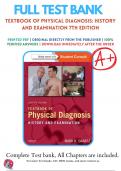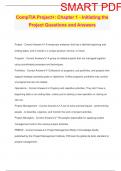Exam (elaborations)
Test Bank for Textbook of Physical Diagnosis: History and Examination 7th Edition By Mark Swartz () 9780323221481 Chapter 1-29 Questions and Answers A+
- Course
- Institution
- Book
Enhance your nursing exam preparation with the essential resource - the Test Bank for 'Textbook of Physical Diagnosis: History and Examination, 7th Edition' by Mark Swartz. Accessible as a printable PDF, this resource offers instant delivery of original content from the publisher. Dive into a wealt...
[Show more]




